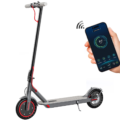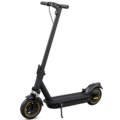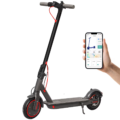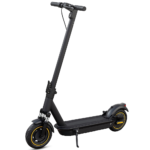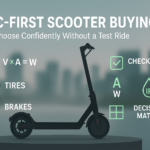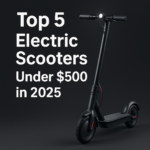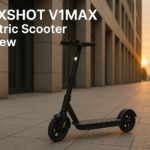- Home
- Scooters
- Electric Scooters
- JUICEASE ES80
JUICEASE ES80


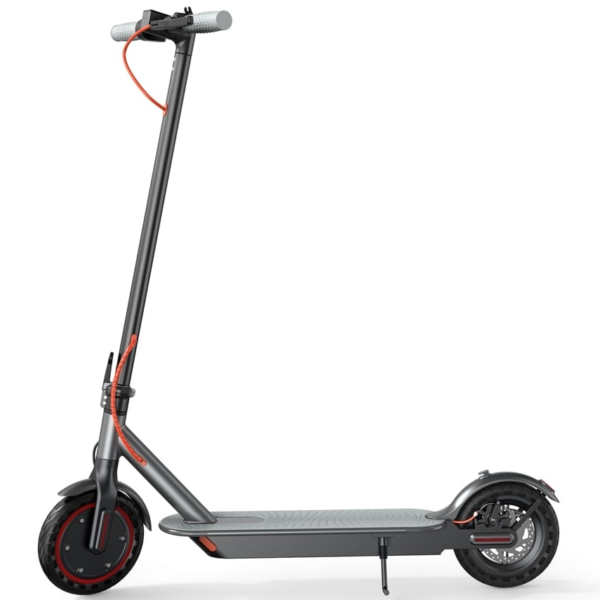

- Battery Range: 21.7 miles (35 km)
- Top Speed: 19.3 mph (31 km/h)
- Motor Power: 350 W
- Weight Capacity: 265 lb (120 kg)
- Charging Time: 4–5 hours
- Scooter Weight: 26.5 lb (12.0 kg)
PROS
- 8.5″ solid tires (puncture-proof)
- Lightweight 26.5 lb (12 kg)
- Front electronic + rear disc brakes
- IP65 rating
- App control with lock
- Folds in ~3 seconds
CONS
- No suspension
- Limited hill climb (max 20°)
- Range varies with conditions

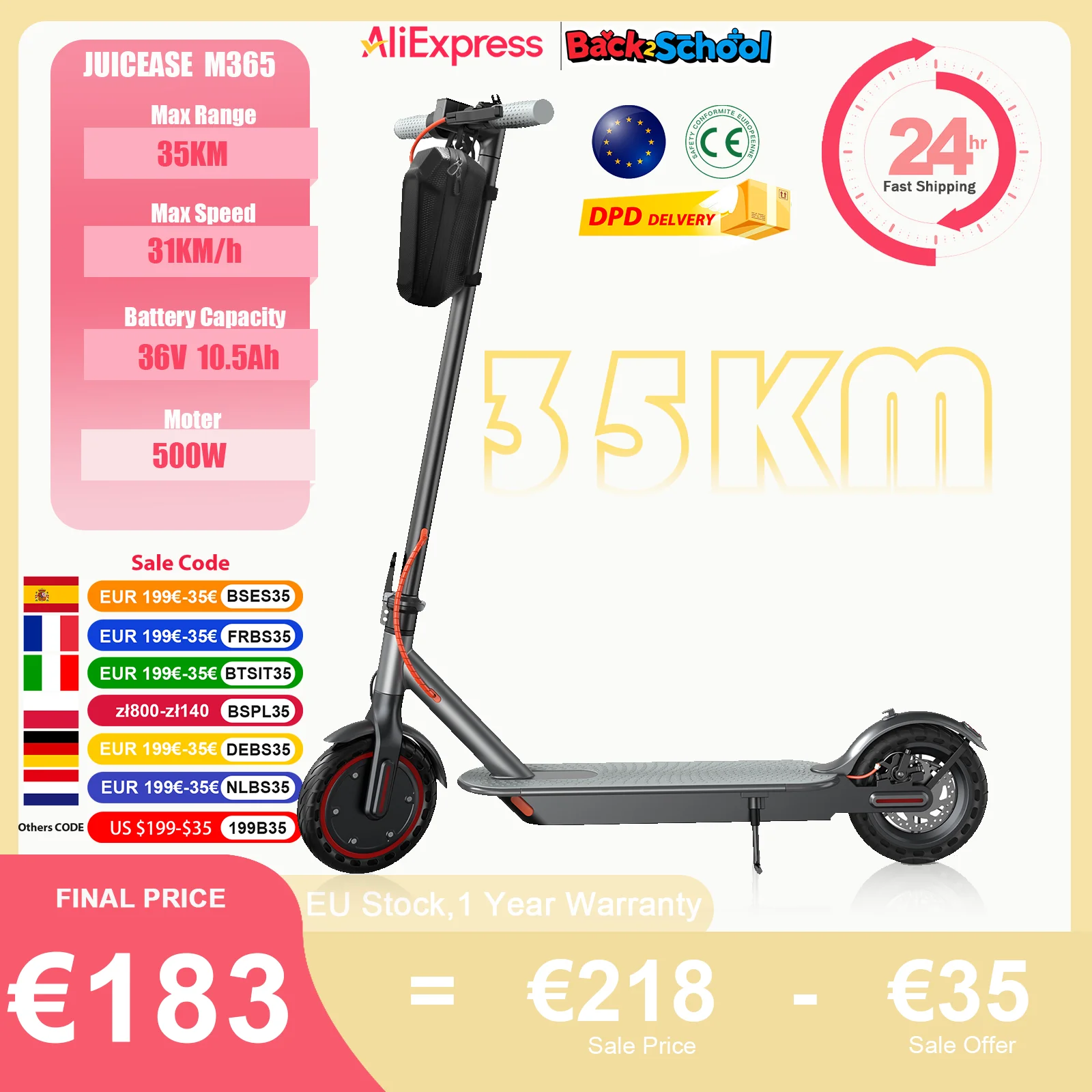
Table of contents
- What Is the JUICEASE ES80?
- How the JUICEASE ES80 Works
- Key Specifications
- Design & Build Quality
- Performance Fundamentals
- Battery, Range & Efficiency
- Ride Quality & Comfort
- Braking & Safety Features
- Portability & Daily Usability
- Maintenance & Care
- Weather & Seasonal Considerations
- JUICEASE ES80 vs Alternatives
- Who the JUICEASE ES80 Is (and Isn’t) For
- FAQs
- Glossary
- Final Notes on Source Specs
The JUICEASE ES80 is an easygoing commuter scooter built around a proven 350-watt hub motor and a 36-volt, 10.5 Ah battery. It targets riders who want dependable city range, simple controls, and low-maintenance hardware without extra weight. Because it folds quickly and weighs about 26.5 lb (12 kg), it suits mixed travel—think apartment to metro, campus to bus, or car-trunk to office. If you’re comparing models in the same family, this JUICEASE E1 Pro review shows how the lineup differs in design and ride feel.
If you prefer a scooter that “just works,” the ES80 fits that brief. It has a clear display, app support, cruise control, solid tires that avoid punctures, and a straightforward braking package. As a result, daily use stays predictable and calm rather than fiddly.
What Is the JUICEASE ES80?
The JUICEASE ES80 is a compact, foldable electric kick scooter designed for urban distance and repeatable everyday performance. The core hardware platform pairs a 350 W front-hub motor with a 36 V lithium-ion battery rated at 10.5 Ah (about 378 Wh). That combination prioritizes efficiency and moderate hills over outright speed. In practice, it shines on bike-lane pacing, neighborhood streets, and city paths.
You get three essentials baked in: low effort portability, reliable range for short-to-medium commutes, and a layout that’s easy to learn on day one. Furthermore, the cockpit is uncluttered and the app options cover basics like modes, cruise, and a simple lock.
How the JUICEASE ES80 Works
Motor. A 350 W brushless hub motor sits in the front wheel. Because it’s gearless at the rider’s level, it feels smooth off the line, with a gentle push rather than a jump. Think of it like an escalator: it moves you forward steadily, not catapult-style. The tuning favors controlled launches in crowded spaces.
Controller. The controller meters current from the battery to the motor. It determines how the scooter responds to throttle input. On the ES80, the response is progressive. Therefore, it’s forgiving for new riders and stable over rougher pavement where sudden surges would unsettle the front end.
Battery. The 36 V, 10.5 Ah pack stores roughly 378 Wh. That’s the fuel tank. As a result, you can expect practical city mileage when you ride at commuter speeds and keep the tire pressure appropriate for solid tires’ design.
Throttle. A thumb throttle rests on the right side of the bar. Because thumb actuation is precise, it’s easier to modulate speed through crowds or rolling turns. Additionally, holding throttle for several seconds enables cruise control.
Brakes. You get a dual system: electronic braking up front and a mechanical disc at the rear. The electronic brake provides drag when you roll off the throttle; it helps settle speed before the cable disc adds stronger bite. Expect a light initial slowdown, then firmer deceleration after about half-lever pull.
Key Specifications
The table below groups the official ES80 specifications into simple blocks with both metric and US units.
| Block | Item | Spec |
|---|---|---|
| General | Model name | JUICEASE ES80 |
| Intended use | Urban commuting / short-to-medium trips | |
| App support | AOVOPRO / Tuya Smart | |
| Display | Handlebar LCD | |
| Performance & Power | Motor | 350 W brushless front-hub |
| Top speed (default) | 25 km/h (15.5 mph) default; user-configurable higher setting where permitted | |
| Hill guidance | Suited to modest grades; steady on ~7–10% with sensible pacing | |
| Battery, Charging & Electrical | Battery voltage / capacity | 36 V, 10.5 Ah (≈ 378 Wh) |
| Estimated range (rated) | Up to ~30 km (≈ 18–19 mi), rider and route dependent | |
| Charge time | ~4–5 hours | |
| Cruise control | Yes (long-press throttle while steady) | |
| Build & Dimensions | Tires | 8.5-inch anti-skid solid tires |
| Frame | Folding aluminum alloy | |
| Weight | ~12 kg (≈ 26.5 lb) | |
| Dimensions (unfolded) | ~1070 × 430 × 1100 mm (≈ 42.1 × 16.9 × 43.3 in) | |
| Dimensions (folded) | ~1070 × 430 × 530 mm (≈ 42.1 × 16.9 × 20.9 in) | |
| Safety & Control | Brakes | Front electronic (regen effect) + rear mechanical disc |
| Lighting | Front and rear LEDs; reflectors vary by region | |
| Water protection | Water-resistant chassis and cabling (use care in heavy rain) | |
| Features & Extras | Ride modes | Multiple speed modes via display/app |
| App features | Mode selection, cruise, basic lock, status readouts | |
| Stand | Integrated kickstand | |
| Cruise Control | Included (see above) | |
| Warranty & Compliance | Warranty | Manufacturer-stated 2-year coverage; terms vary by seller and region |
| Compliance notes | Consumer e-mobility standards vary by market; follow local rules |
The dimensions, battery, weight, tire type, charging time, and control features reflect the official ES80 spec sheet from the platform manufacturer, including the folded size and cruise-control behavior. Warranty language reflects the manufacturer’s stated policy on their official store.
Design & Build Quality
The ES80 takes the classic commuter form and trims it down. The deck is flat, grippy, and long enough for a staggered foot stance, which improves stability over seams and pothole lips. Because the battery sits within the deck, the center of gravity stays low. Therefore, handling feels planted at neighborhood speeds.
The stem locks with a familiar collar and latch arrangement. It is not overbuilt; instead, it aims for predictable stiffness in a lightweight package. You may notice a hint of flex if you lean hard on the bars over bumps. That’s typical at this weight and wheel size. The bar layout is clean: LCD in the center, throttle on the right, brake lever on the left. Moreover, wiring runs neatly along the stem with strain relief at key points.
Fit and finish are commuter-practical. The paint resists casual scuffs, the fenders cover spray adequately, and the kickstand deploys quickly. Because the tires are solid, you have fewer puncture worries. However, you trade some bump absorption compared to air-filled tires.
Performance Fundamentals
Acceleration feel. Off the line, the ES80 starts smoothly. The motor doesn’t yank; rather, it builds speed with predictable pull. Consequently, novice riders feel in control right away. In stop-and-go traffic, that matters because it reduces front-end dive and wobble.
Cruising stability. Once you’re rolling, the low deck height and modest stem length help the scooter track straight. Additionally, the solid tires maintain shape at speed, so the contact patch remains consistent. While small wheels transmit sharp edges, the chassis keeps your line steady on decent pavement.
Hill-climb behavior. On typical city grades around 7–10%, the scooter maintains motion with a more deliberate pace. You’ll want a running start when possible. Shift weight toward the rear slightly to keep the front planted, and avoid sudden throttle chops mid-slope. Because power is tuned for commuting efficiency, very steep or long climbs will slow progress, which is expected in this class.
Battery, Range & Efficiency
Rated capacity is 10.5 Ah at 36 V. In energy terms, that’s roughly 378 Wh. Real-world range depends on rider weight, route, speed, stops, temperature, wind, and grade. On flat paths with gentle pacing, you can approach the rated figure. However, cold weather, hills, headwinds, and repeated hard starts reduce range.
Because the tires are solid, you never lose efficiency to under-inflation. That said, solid tires weigh more than comparable pneumatic versions. The scooter counters this with a modest motor and careful controller tuning, so day-to-day energy use stays reasonable.
Charging best practices. Let the pack rest a few minutes after a ride before charging. Place the charger on a hard surface with ventilation. Unplug after the indicator flips to “charged.” For long storage, keep the pack around half charge and top up monthly. These habits help the battery stay balanced over time. Additionally, avoid deep discharges to zero; the scooter prefers partial charges in daily life.
Ride Quality & Comfort
Solid 8.5-inch tires mean zero flats from nails, glass, or pinch cuts. That’s a major confidence booster for commuters. The trade-off is bump harshness on broken pavement. Fortunately, the deck grip and steady bar height help you ride light over rough spots. Bend your knees, unweight slightly before sharp edges, and you’ll keep your hands relaxed.
The ES80 does not rely on a complex suspension. Instead, it uses frame flex and tire compliance to manage chatter. As a result, the chassis feels simple and predictable. On fresh asphalt, the ride is quiet and calm. On older concrete, you’ll feel seams but retain control. Stem flex is moderate; it acts like a small spring against quick hits and then settles. Riders quickly adapt by loosening their elbows.
Ergonomically, the thumb throttle reduces wrist strain in long commutes. The lever brake has firm engagement after the first half pull. Because the regen effect starts as you roll off the throttle, you can pre-shape your speed before braking hard.
Braking & Safety Features
The braking system blends electronic regen and rear mechanical disc. The electronic component slows the front wheel smoothly when you ease off the throttle; it’s subtle but useful. Then the rear disc adds mechanical bite as you squeeze the lever. Together, they feel progressive.
Lights include a forward LED and a rear LED that improves visibility. Reflector color may differ by region; the manufacturer notes yellow in the UK and red in the US/EU. Therefore, check your scooter on arrival and position stick-on reflectors where local rules suggest—typically on the sides and rear edges.
Water protection is described as water-resistant. Cables and ports have seals, and the deck enclosure is designed to handle splashes. Even so, ride conservatively in rain. Reduce speed, extend following distance, and avoid deep puddles. Remember, braking distances lengthen on wet rims and discs. Additionally, solid tires harden in cold weather, which further affects traction.
Portability & Daily Usability
At about 12 kg (26.5 lb), the ES80 is easy to carry up stairs or onto a bus. The folding mechanism is quick and familiar: unlatch, fold the stem, and secure for transport. Because the folded profile is slim—about 42.1 × 16.9 × 20.9 in—it fits behind a desk or in a trunk.
Daily tasks are simple: unfold, power on, select a mode, and go. Cruise control reduces finger fatigue on longer paths. The app allows basic tweaks and a soft lock for short stops. Nevertheless, treat the lock as a deterrent, not a replacement for a physical lock. For storage, keep it indoors when possible and wipe moisture off after wet rides.
Maintenance & Care
Although the ES80 is low-maintenance, a small routine prevents headaches.
- Before weekly rides: Check brake lever feel and confirm the rotor doesn’t rub. Inspect for loose bolts along the stem clamp and deck hardware; tighten to manufacturer torque if needed.
- Monthly: Wipe dust from the display and charging port cap. Cycle the battery between ~30% and ~80% during frequent use to reduce stress.
- Quarterly: Inspect the disc pads for wear and ensure the cable is smooth with no kinks. Listen for new creaks at the hinge and apply a light, manufacturer-approved lubricant on external latch pivots only (never on the braking surfaces).
- Firmware / app: Open the app occasionally to check for updates. Apply only from official sources.
- Solid tires: Look for chips or cuts. Replace in pairs if wear becomes uneven.
Because the tires are solid, you avoid tube patching, sealant mess, and pressure checks. That saves time. However, keep an eye on the rear brake cable stretch during the first several weeks; minor re-adjustment restores firm bite.
Weather & Seasonal Considerations
Rain. Slow your pace and brake earlier. Solid tires evacuate water differently than pneumatic tread. Therefore, smooth steering inputs matter more. Avoid standing water that hides potholes or curbs.
Heat. Lithium batteries prefer moderate temperatures. Park in the shade when possible. If the deck feels hot after long sun exposure, let it cool before charging.
Cold. Expect reduced range in low temperatures because batteries deliver less energy. In addition, solid rubber stiffens as it gets colder, which slightly reduces grip. Consequently, ease into corners and extend stopping distances.
Storage. For weeks-long storage, leave the battery near half charge. Top up once a month. Wipe the scooter dry after wet rides to protect fasteners.
JUICEASE ES80 vs Alternatives
Within the commuter class, the ES80 prioritizes simplicity and utility:
- Against ultra-light last-mile scooters: The ES80 carries more battery and feels steadier at pace. It isn’t as featherweight, yet it remains manageable on stairs.
- Against heavier “performance commuters”: Those add higher peak power, larger batteries, and sometimes suspension. They also weigh more and cost more. The ES80 sticks to no-drama handling and quick folding.
- Against off-road-oriented models: Trail scooters add suspension travel and tire volume. They’re heavier and less convenient downtown. The ES80 chooses compactness and paved-path manners.
Choose the ES80 when you want a low-stress commuter with proven parts, straightforward care, and a city-friendly footprint. If you need extreme hill power or long-range touring, consider bigger batteries and motors. Otherwise, the ES80 keeps things refreshingly simple.
Who the JUICEASE ES80 Is (and Isn’t) For
Great for:
- Students riding across campus and nearby neighborhoods.
- Apartment dwellers carrying a scooter up short flights.
- Multi-modal commuters linking rides with trains or buses.
- New riders who value predictable controls and easy maintenance.
Probably not for:
- Riders tackling long, steep hills daily.
- Anyone seeking high top speed or dual-suspension plushness.
- Heavy cargo hauling; the deck works for a backpack, not boxes.
If your daily pattern is five to eight kilometers each way with average bike-lane speeds, the ES80’s balance of weight, range, and hardware suits you well.
FAQs
1) How fast does it go out of the box?
By default, the ES80 is set to around 25 km/h (15.5 mph). Some regions allow a higher user-configurable setting; always follow local rules.
2) What real-world range should I expect?
On flat routes at modest speeds, many riders see mid-teens miles on a charge. Hills, stops, cold weather, and higher speeds reduce that figure.
3) Does the ES80 have cruise control?
Yes. Hold steady throttle for several seconds, and cruise control engages. Tap brake or change throttle to disengage.
4) Is the JUICEASE ES80 water-resistant?
Yes, the chassis and cabling are water-resistant for everyday splashes. Even so, ride conservatively in rain and avoid deep puddles.
5) Can I climb hills?
Yes, modest grades are fine. For 7–10% climbs, maintain momentum, use a steady throttle, and expect speeds to drop compared to flat ground.
6) What kind of tires does it use?
8.5-inch solid tires. You won’t get flats, but the ride feels firmer than with pneumatic tires.
7) Where can I find a “JUICEASE ES80 overview” in one place?
You’re reading it here—this article compiles the model’s design, performance, care tips, and specifications into a single, easy reference.
Glossary
- Ah (Amp-hours): Battery capacity. Higher Ah means more stored charge.
- Wh (Watt-hours): Battery energy (volts × amp-hours). Indicates potential range.
- Voltage (V): Electrical pressure. Many commuter scooters run 36 V systems.
- Controller: The electronic module that regulates motor power from the battery.
- Brushless Hub Motor: A motor built into the wheel. Quiet and low-maintenance.
- Regen (Electronic Braking): Uses the motor to slow the scooter electrically.
- Mechanical Disc Brake: Caliper squeezes a rotor for friction-based stopping.
- Cruise Control: Holds a steady speed after a few seconds of constant throttle.
- Stem Flex: Small fore-aft movement in the handlebar mast under load.
- IP / Water Resistance: How well the device resists dust/water. Ratings and claims vary.
- Solid Tire: Puncture-proof tire made of rubber or similar compound; firmer ride.
- Pneumatic Tire: Air-filled tire; smoother ride, requires pressure checks.
- Deck: Standing platform. Lower decks aid stability and control.
- Hill Grade (%): Rise over run × 100. A 10% grade climbs 10 m over 100 m forward.
- Mode: Preset speed/power behavior selectable from the display or app.
Final Notes on Source Specs
The core specifications for motor power, battery voltage and capacity, rated range, weight, tire type, charge time, dimensions (including folded), cruise control behavior, and brake layout are drawn from the official ES80 platform listing and associated documentation. Warranty language reflects the manufacturer’s stated coverage on their store and may vary by region or seller.
Specifications
General
| Model The Model specifies the exact version or name of the scooter. It helps identify its unique design, features, and specifications within the manufacturer’s product line. Knowing the model makes it easier to compare options, find compatible accessories, or look up support information. | ES80 |
| Brand The Brand identifies the manufacturer or company that designs and produces the scooter. A trusted brand is a sign of quality, reliability, and good customer support. Well-known brands often have higher standards for safety, performance, and after-sales service, giving you more confidence in your purchase. | JUICEASE |
| Release Date The Release Date indicates when the scooter model was officially launched on the market. This helps you know how current the design, technology, and features are. A newer release date often means updated components, improved performance, and the latest safety or smart features. | 17 November 2025 |
| Recommended Age Recommended Age indicates the minimum age range that the scooter is designed for, based on safety, size, and ease of use. Following the recommended age helps ensure that riders can handle the scooter’s speed, weight, and controls comfortably and safely. Always check local laws and use protective gear, especially for younger riders. | 14+ |
Performance & Power
| Motor Power (Wattage) What it means: The motor power, measured in watts (W), shows how strong the scooter’s electric motor is. Why it matters: Higher wattage usually means better acceleration, more torque, and improved performance on hills or rough terrain. For example, a 250W motor is good for flat city roads and light riders, while a 500W or 1000W motor provides more power for faster speeds or climbing steep inclines. | 350 W brushless hub motor |
| Top Speed The Top Speed indicates the maximum speed that the scooter can reach under optimal conditions. It’s usually measured on level ground with a fully charged battery and an average rider weight. A higher top speed allows you to travel longer distances faster, but always ensure you ride within legal speed limits and your personal comfort zone for safety. | 19.3 mph (31 km/h); region default 15.5 mph (25 km/h) |
| Battery Capacity Battery Capacity refers to the total amount of energy the scooter’s battery can store, usually measured in ampere-hours (Ah) or watt-hours (Wh). A higher battery capacity means you can ride longer distances on a single charge, reducing the need for frequent recharging. Keep in mind that actual range can vary depending on rider weight, terrain, speed, and weather conditions. | 36 V 10.5 Ah |
| Estimated Range per Charge The Estimated Range per Charge indicates the average distance the scooter can travel on a single full battery charge. This range is calculated under optimal conditions, such as flat terrain, moderate speed, and average rider weight. Real-world range may vary depending on riding style, terrain, weather, and load. A longer range means fewer recharges and greater freedom for longer trips. | Up to 21.7 miles (35 km) |
| Hill Climb Ability Hill Climb Ability describes the maximum incline or slope that the scooter can handle while maintaining stable performance. It’s typically expressed as a percentage or in degrees. A higher hill climb rating means the scooter can tackle steeper hills without losing too much speed or power. Actual climbing performance may vary based on rider weight, battery charge, and terrain conditions. | Up to 20° |
| Drive System The Drive System refers to how power from the motor is delivered to the wheels. Electric scooters typically use either a hub motor (directly integrated into the wheel) or a chain/belt drive system. A high-quality drive system ensures smooth acceleration, efficient power transfer, and low maintenance. The choice of drive system affects performance, noise level, and overall ride experience. | Not specified |
Charging & Electrical
| Charging Time Charging Time indicates how long it takes to fully recharge the scooter’s battery from empty to 100% using the standard charger provided. Faster charging means less downtime and more time on the road. Actual charging time may vary slightly depending on battery capacity, charger output, and environmental conditions. | Approx. 4–5 hours |
| Battery Type Battery Type refers to the specific technology used in the scooter’s battery, which affects performance, lifespan, weight, and charging time. Most modern electric scooters use high-quality lithium-ion (Li-ion) batteries because they offer a good balance of energy density, durability, and low maintenance. A reliable battery type ensures consistent power delivery and longer riding ranges. | Lithium-ion battery pack |
| Removable Battery A Removable Battery means the battery pack can be easily detached from the scooter for convenient charging and replacement. This feature allows you to charge the battery separately, swap it with a spare for extended range, or securely store it indoors in extreme weather. Removable batteries add flexibility and make it easier to keep your scooter powered up wherever you are. | Non-removable internal battery (fixed pack) |
| Regenerative Braking Regenerative Braking is an energy-saving feature that converts some of the energy normally lost during braking back into battery power. When you slow down or brake, the motor works in reverse to generate electricity, which helps extend the scooter’s range and improves overall efficiency. This system also reduces wear on traditional brake components, leading to lower maintenance over time. | Not specified |
| Lighting Lighting refers to the built-in front and rear lights that enhance visibility and safety when riding in low-light conditions or at night. Good lighting helps you see the road ahead and ensures that other road users can see you. Many scooters include LED headlights, taillights, and sometimes brake lights or side reflectors for added safety and compliance with local traffic regulations. | LED headlight & rear light; reflectors |
Build & Dimensions
| Scooter Weight Scooter Weight refers to the total weight of the scooter when fully assembled, including the battery. This affects how easy it is to carry, lift, and store the scooter when not in use. A lighter scooter is more portable and convenient for commuting, especially if you need to carry it upstairs or onto public transport. Keep in mind that a sturdy frame and quality components may add to the weight but also contribute to better durability and ride stability. | 26.5 lb (12.0 kg) |
| Maximum Rider Weight Maximum Rider Weight indicates the highest rider weight that the scooter is designed to safely support while maintaining optimal performance and stability. Staying within this limit helps ensure reliable acceleration, braking, and climbing ability, and it protects the frame, suspension, and motor from excessive strain. Exceeding the recommended limit may reduce performance and increase wear on components. | 265 lb (120 kg) |
| Deck Size Deck Size refers to the dimensions of the scooter’s standing platform. A wider and longer deck provides more foot space, allowing you to stand comfortably and adjust your stance while riding. A well-sized deck improves balance and stability, especially on longer rides or at higher speeds. Compact decks, on the other hand, help keep the scooter lightweight and portable. | Aluminum alloy frame; foldable stem |
| Handlebar Height Handlebar Height refers to the distance from the deck to the handlebars, which affects your riding posture and comfort. An appropriate handlebar height helps you maintain good balance, reduces strain on your back and arms, and makes steering more comfortable. Some scooters have adjustable handlebars to fit riders of different heights, while others have a fixed height for a streamlined design. | Fixed (not specified) |
| Folding Mechanism The Folding Mechanism describes how easily and securely the scooter can be folded for carrying and storage. A well-designed folding system lets you quickly collapse the scooter into a compact size, making it convenient to transport on public transit, store under a desk, or fit into a car trunk. Look for sturdy latches and safety locks to ensure the scooter stays firmly in place when folded or unfolded. | 3-step quick fold (~3 s) |
| Dimensions Folded Dimensions indicate the size of the scooter when it’s fully folded. This measurement shows how much space the scooter will take up when stored or carried, making it easier to check if it will fit in your car trunk, under a desk, or in a closet. Compact folded dimensions are ideal for commuters who need to bring their scooter on public transport or store it in tight spaces. | Folded: 1070 × 430 × 460 mm; Unfolded: 1070 × 1120 × 430 mm |
| Material Material refers to the primary construction materials used for the scooter’s frame and key components. High-quality materials like aircraft-grade aluminum, reinforced steel, or durable composites provide strength, stability, and a lighter overall weight. A sturdy material ensures the scooter can handle daily wear and tear while maintaining safety and performance. | Aluminum alloy |
Safety & Control
| Brake Type(s) Brake Type(s) describe the braking systems the scooter uses to help you slow down or stop safely. Common brake types include mechanical brakes (like drum or disc brakes), electronic brakes, and foot brakes. Many scooters combine multiple braking systems for added safety and shorter stopping distances. The type and quality of brakes affect your control, especially when riding at higher speeds or on slopes. | Front electronic + rear disc |
| Suspension Suspension refers to the system that absorbs shocks and vibrations while riding, providing a smoother and more comfortable ride over uneven or rough surfaces. Scooters may have front suspension, rear suspension, or dual suspension for better shock absorption and stability. Good suspension helps reduce rider fatigue and improves control, especially when riding on bumpy roads or off-road paths. | None |
| Tire Type Tire Type refers to the kind of tires the scooter uses, which directly affects ride comfort, traction, and maintenance. Common types include solid (airless) tires, pneumatic (air-filled) tires, or hybrid options. Pneumatic tires offer better shock absorption and a smoother ride on rough surfaces, while solid tires are puncture-proof and require less upkeep. The right tire type helps ensure safe handling and a comfortable ride in different conditions. | 8.5″ solid (anti-skid) |
| Tire Size Tire Size indicates the diameter and width of the scooter’s tires, which affect ride comfort, stability, and how well the scooter handles different terrains. Larger tires generally offer better shock absorption and a smoother ride over bumps and rough surfaces, while smaller tires keep the scooter lighter and more portable. Choosing the right tire size helps ensure a balance between agility and comfort. | 8.5-inch |
| Kickstand The Kickstand is a built-in stand that allows you to park your scooter upright when it’s not in use. A sturdy kickstand keeps the scooter stable and prevents it from tipping over, protecting it from scratches and damage. It also makes storing and accessing your scooter more convenient, whether you’re at home, work, or on the go. | Not specified |
| Water Resistance Rating Water Resistance Rating indicates how well the scooter is protected against water and moisture, usually shown as an IP (Ingress Protection) rating. This rating helps you understand whether the scooter can handle light rain, splashes, or wet roads without damage. While most scooters are not fully waterproof, a good water resistance rating adds peace of mind when riding in changing weather conditions. Always avoid deep puddles or submerging the scooter to protect its electrical components. | IP65 |
Features & Extras
| Display/Console The Display (or Console) shows important real-time information about your ride, helping you monitor your scooter’s status at a glance. Typical displays show speed, battery level, distance traveled, and riding mode. Some models also include additional features like Bluetooth connectivity, app integration, or backlighting for better visibility at night. A clear and easy-to-read display enhances safety and convenience on every trip. | Not specified |
| Ride Modes Ride Modes refer to the different speed and power settings you can choose to match your riding style or road conditions. Common modes include eco for maximum range and energy efficiency, standard for everyday balance, and sport or turbo for higher speed and stronger acceleration. Switching between ride modes allows you to customize performance, conserve battery, and ride safely in various environments. | 3 speed levels |
| Smart App Connectivity Smart App Connectivity lets you pair your scooter with a dedicated mobile app via Bluetooth. Using the app, you can monitor real-time ride stats like speed, battery level, and range, adjust settings such as ride modes or cruise control, lock the scooter for added security, and sometimes receive firmware updates. This feature adds convenience and allows you to personalize your riding experience right from your smartphone. | Bluetooth app (AOVOPRO or Tuya Smart): lock, speed limit, zero/non-zero start |
| Anti-Theft System The Anti-Theft System helps protect your scooter from unauthorized use or theft. This feature can include built-in alarms, electronic motor locks, GPS tracking, or remote locking through a mobile app. A good anti-theft system provides peace of mind when parking your scooter in public spaces, adding an extra layer of security to safeguard your investment. | App lock |
| Cruise Control Cruise Control allows you to maintain a steady speed without continuously holding the throttle. This feature makes longer rides more comfortable by reducing hand fatigue and providing a smoother, more relaxed riding experience — especially on flat, open roads or bike lanes. For safety, cruise control can usually be easily activated or deactivated while riding. | Yes (hold throttle ~10 s to activate) |
| Accessories Included Accessories Included lists the additional items that come with the scooter to enhance your riding experience and convenience. Common accessories may include a charger, kickstand, bell, lights, phone holder, or carrying strap. These extras add value by making your scooter safer, easier to use, and ready to ride straight out of the box. | Scooter, charger, tool kit, user manual |
Warranty & Compliance
| Warranty Period The Warranty Period indicates how long the manufacturer guarantees the scooter against defects in materials and workmanship under normal use. A good warranty provides peace of mind, showing the brand’s confidence in its product quality. Always check what parts are covered, such as the frame, battery, and motor, and follow the maintenance guidelines to keep your warranty valid. | Region-dependent |
| Certifications Certifications confirm that the scooter meets specific safety, quality, and environmental standards set by recognized organizations or regulatory bodies. Common certifications may include CE, RoHS, UL, or other local compliance marks, depending on your region. These certifications ensure that the scooter is manufactured to high standards and is safe and legal to use in your country. | Not specified |
Price Comparison




